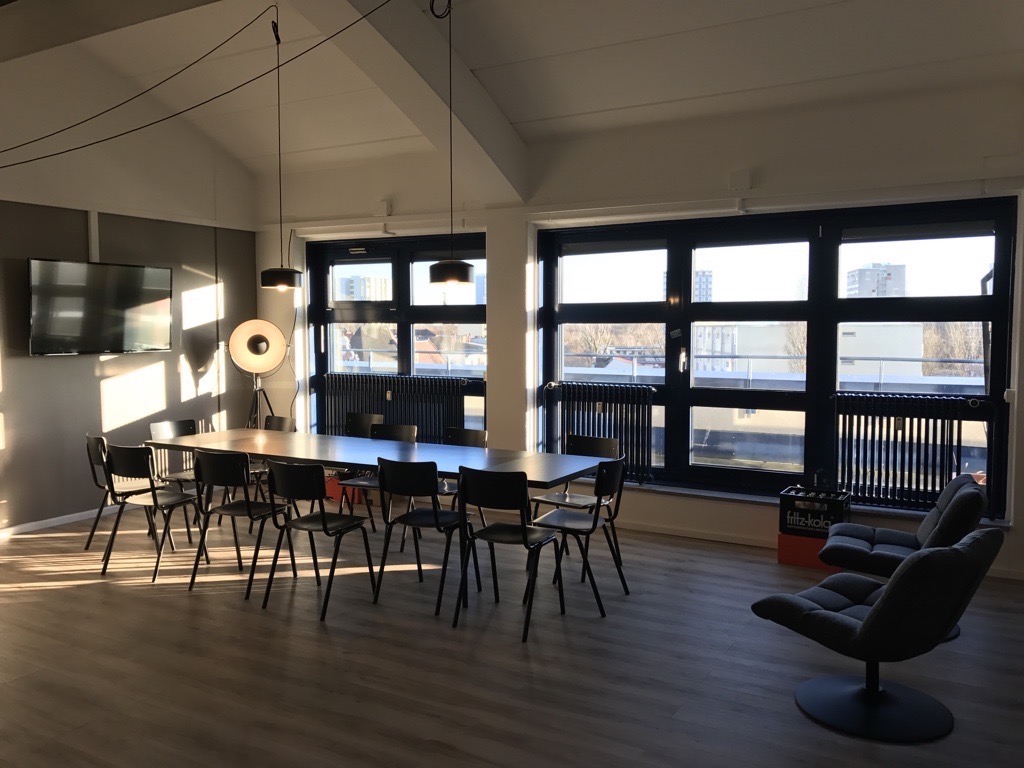How Cortado has been protecting its employees against covid since the beginning of 2020. An interview with Cortado CEO Carsten Mickeleit.
The covid virus has been sweeping the world for almost two years now, with varying degrees of severity and with different variants. You would have to be a psychic to predict how things will develop in the future. One thing is clear, however. The world of work has changed dramatically. In an interview, Cortado CEO Carsten Mickeleit explains how work has changed in his company, how the transition went, and how it is likely to continue.
Carsten, how did Cortado react when the covid pandemic began in Germany in early 2020?
When the first signs emerged in February 2020 that a lockdown could be implemented, we asked all employees to check and see if they could also work entirely from home. At the time, this call was met with a great deal of astonishment, and even resistance in some cases. In the end, however, this early stress test made things a lot easier for us later on.
What measures have you implemented or are you implementing to protect employees?
In March 2020, when it became apparent that the transit commute to work, in particular, could pose a risk of infection, we sent almost all employees into the home office. At all times, we tried to get ahead of the wave. Initially, we had cloth masks made and sent to our employees, immediately we set up hand sanitizer stations in all corridors and included desk disinfection in our cleaning program. Then, as soon as they were available, we also provided free FFP2/N95 masks and rapid antigen tests. Well ahead of regulatory requirements.

Did you have enough hardware to send everyone into the home office?
Definitely! We had already provided many employees with laptops and have a BYOD program for smartphones that is very popular. Of course, we also had to reorder some hardware.
How have your colleagues reacted? How are they coping with the situation?
Very differently, depending also on the private workload at home. Fixed guidelines and rules don’t help much in such a situation. It is more important to have a common understanding and try to get through the crisis as best as possible.
How do you keep in touch with your employees?
Communication takes place mainly via Microsoft Teams. Fortunately, we haven’t had to explain to anyone that it’s nicer to communicate with the camera turned on. Every employee should communicate with their colleagues at least once a day via video calls.

Has there been a drop in productivity as a result of the home office?
No, absolutely not, in fact, the opposite is the case. Indeed, communication with our international locations has improved significantly, because video calls are the new normal. It doesn’t matter how far away employees are.
What rules apply to employees who continue to come into the office?
From the very beginning, we tried to ensure that our office is a safe place. That’s why we used our options to make sure that only vaccinated and/or tested employees were in the office. When the regulations for offices finally came into place that only allowed fully vaccinated, recovered, or tested to enter the workplace, it was at least a year too late from our point of view, but we implemented it consistently. We now have a vaccination rate of over 90% and still, encourage our employees to test themselves regularly with rapid antigen tests provided free of charge.
What rules apply to those who are in the home office?
Not many. Of course, you should make sure you keep to your working hours, but also make sure you take breaks. Above all, it’s important to be responsive to your colleagues and to organize your working hours in such a way that you can easily communicate with each other.
What measures are currently in place in the office?
We have hand sanitizer, disinfection of desks and a traffic light system for their use, free FFP2/N95 masks, and rapid antigen tests.
Is there a certain attendance requirement?
Yes, but only if the pandemic situation allows it. We clearly see the advantages of the home office. Nevertheless, there are also some disadvantages, and we would like to compensate for these with so-called community days. These are fixed days when the team gets together in the office. That way, we don’t lose personal contact and also have time to get to know each other better and talk about topics beyond the job.
What will happen next when the infection figures hopefully drop at some point? Will most employees return to the office?
Presumably, the end of the pandemic doesn’t mean zero covid, but rather that we’ve learned how to deal with the virus. It certainly doesn’t make it any easier. But yes, we do anticipate that employees will come back to the office, but not for the entire week as in the past. So we hope to combine the best of home office and presence in the office. We shouldn’t kid ourselves, though, striking a new balance won’t be easy.
What do new employees have to adjust to? Should they work in the home office or the office?
We are aiming for a hybrid work model, i.e., a dynamic shift between the office and the home office. As a new employee, you should be ready for that.
Do you have any wishes, ideas, or appeals you would like to make at this point?
The law for fully vaccinated, recovered, or tested in the workplace should clearly have come at the beginning of the pandemic. Unfortunately, a lot of valuable time was lost because of its delay.